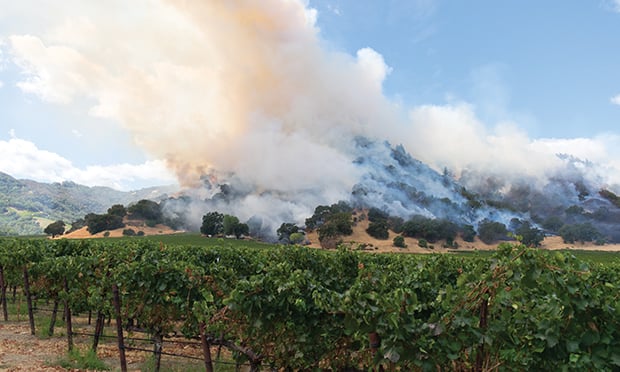 It's too soon to know the total damage assessments on the wine industry from this year's fires, but an analysis by the California Association of Winegrape Growers estimates initial losses at $400 million. (Photo: iStock: Ordinary Mario)
It's too soon to know the total damage assessments on the wine industry from this year's fires, but an analysis by the California Association of Winegrape Growers estimates initial losses at $400 million. (Photo: iStock: Ordinary Mario)
Northern California's famous wine country has been scorched by two major wildfire incidents and there are still several weeks until the end of the 2020 wildfire season.
Recommended For You
Want to continue reading?
Become a Free PropertyCasualty360 Digital Reader
Your access to unlimited PropertyCasualty360 content isn’t changing.
Once you are an ALM digital member, you’ll receive:
- Breaking insurance news and analysis, on-site and via our newsletters and custom alerts
- Weekly Insurance Speak podcast featuring exclusive interviews with industry leaders
- Educational webcasts, white papers, and ebooks from industry thought leaders
- Critical converage of the employee benefits and financial advisory markets on our other ALM sites, BenefitsPRO and ThinkAdvisor
Already have an account? Sign In Now
© Touchpoint Markets, All Rights Reserved. Request academic re-use from www.copyright.com. All other uses, submit a request to [email protected]. For more inforrmation visit Asset & Logo Licensing.







